徹底搞懂Java多線程(一)
1.繼承Thread
2.實(shí)現(xiàn)Runnable
3.實(shí)現(xiàn)Callable
使用繼承Thread類來(lái)開(kāi)發(fā)多線程的應(yīng)用程序在設(shè)計(jì)上是有局限性的,因?yàn)镴ava是單繼承。
繼承Thread類
public class ThreadDemo1 { // 繼承Thread類 寫法1 static class MyThread extends Thread{@Overridepublic void run() { //要實(shí)現(xiàn)的業(yè)務(wù)代碼} } // 寫法2 Thread thread = new Thread(){@Overridepublic void run() { //要實(shí)現(xiàn)的業(yè)務(wù)代碼} };}
實(shí)現(xiàn)Runnable接口
//實(shí)現(xiàn)Runnable接口 寫法1class MyRunnable implements Runnable{ @Override public void run() {//要實(shí)現(xiàn)的業(yè)務(wù)代碼 }}//實(shí)現(xiàn)Runnable接口 寫法2 匿名內(nèi)部類class MyRunnable2 { public static void main(String[] args) {Thread thread = new Thread(new Runnable() { @Override public void run() {//要實(shí)現(xiàn)的業(yè)務(wù)代碼 }}); }}
實(shí)現(xiàn)Callable接口(Callable + FutureTask 創(chuàng)建帶有返回值的線程)
package ThreadDeom;import java.util.concurrent.Callable;import java.util.concurrent.ExecutionException;import java.util.concurrent.FutureTask;/** * user:ypc; * date:2021-06-11; * time: 17:34; *///創(chuàng)建有返回值的線程 Callable + Futurepublic class ThreadDemo2 { static class MyCallable implements Callable<Integer>{@Overridepublic Integer call() throws Exception { return 0;} } public static void main(String[] args) throws ExecutionException, InterruptedException {//創(chuàng)建Callable子對(duì)象MyCallable myCallable = new MyCallable();//使用FutureTask 接受 CallableFutureTask<Integer> futureTask = new FutureTask<>(myCallable);//創(chuàng)建線程并設(shè)置任務(wù)Thread thread = new Thread(futureTask);//啟動(dòng)線程thread.start();//得到線程的執(zhí)行結(jié)果int num = futureTask.get(); }}
也可以使用lambda表達(dá)式
class ThreadDemo21{ //lambda表達(dá)式 Thread thread = new Thread(()-> {//要實(shí)現(xiàn)的業(yè)務(wù)代碼 });}
Thread的構(gòu)造方法
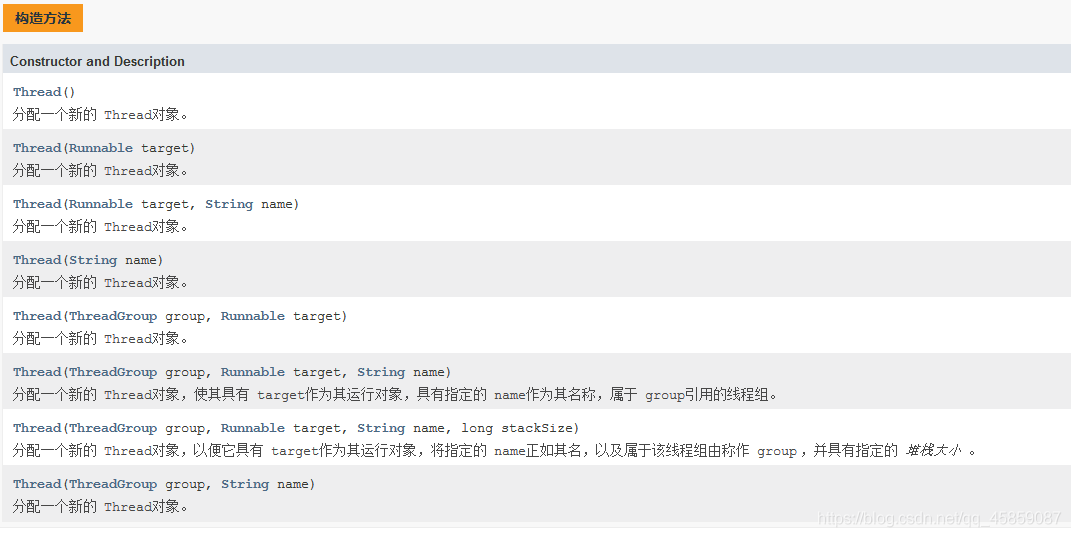
獲取當(dāng)前線程的引用、線程的休眠
class Main{ public static void main(String[] args) throws InterruptedException {Thread.sleep(1000);//休眠1000毫秒之后打印System.out.println(Thread.currentThread());System.out.println(Thread.currentThread().getName()); }}

package ThreadDeom;/** * user:ypc; * date:2021-06-11; * time: 18:38; */public class ThreadDemo6 { public static void main(String[] args) throws InterruptedException {Thread thread = new Thread(new Runnable() { @Override public void run() {System.out.println('線程的ID:' + Thread.currentThread().getId());System.out.println('線程的名稱:' + Thread.currentThread().getName());System.out.println('線程的狀態(tài):' + Thread.currentThread().getState());try { Thread.sleep(1000);} catch (InterruptedException e) { e.printStackTrace();} }},'線程一');thread.start();Thread.sleep(100);//打印線程的狀態(tài)System.out.println('線程的狀態(tài):'+thread.getState());System.out.println('線程的優(yōu)先級(jí):'+thread.getPriority());System.out.println('線程是否存活:'+thread.isAlive());System.out.println('線程是否是守護(hù)線程:'+thread.isDaemon());System.out.println('線程是否被打斷:'+thread.isInterrupted()); }}
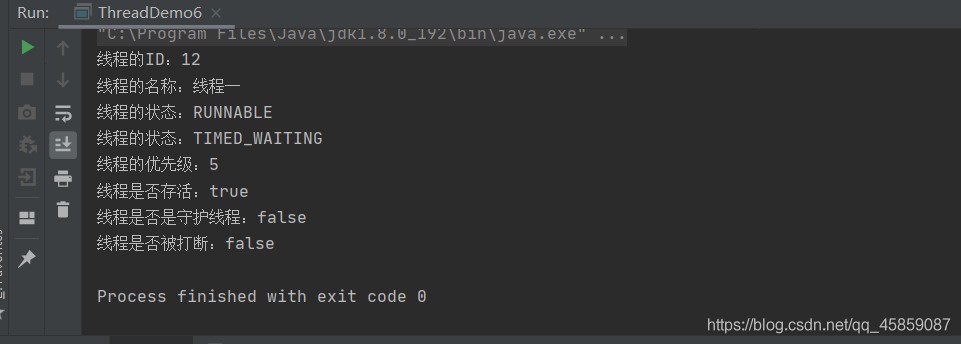
線程的等待
假設(shè)有一個(gè)坑位,thread1 和 thread2 都要上廁所。一次只能一個(gè)人上,thread2只能等待thread1使用完才能使用廁所。就可以使用join()方法,等待線程1執(zhí)行完,thread2在去執(zhí)行。👇
package ThreadDeom;/** * user:ypc; * date:2021-06-12; * time: 10:48; */public class ThreadDemo13 { public static void main(String[] args) throws InterruptedException {Runnable runnable = new Runnable() { @Override public void run() {System.out.println(Thread.currentThread().getName()+'🚾');try { Thread.sleep(1000);} catch (InterruptedException e) { e.printStackTrace();}System.out.println(Thread.currentThread().getName()+'出來(lái)了'); }};Thread t1 = new Thread(runnable,'thread1');t1.start();//t1.join();Thread t2 = new Thread(runnable,'thread2');t2.start(); }}
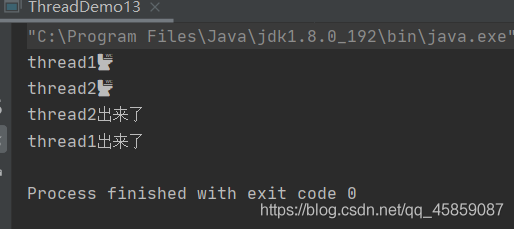
沒(méi)有join()顯然是不行的。加上join()之后:

package ThreadDeom;/** * user:ypc; * date:2021-06-12; * time: 9:59; */public class ThreadDemo11 { private static boolean flag = false; public static void main(String[] args) throws InterruptedException {Thread thread = new Thread(new Runnable() { @Override public void run() {while (!flag){ System.out.println('我是 : ' + Thread.currentThread().getName() + ',我還沒(méi)有被interrupted呢'); try {Thread.sleep(100); } catch (InterruptedException e) {e.printStackTrace(); }}System.out.println('我是 '+Thread.currentThread().getName()+',我被interrupted了'); }},'thread');thread.start();Thread.sleep(300);flag = true; }}

package ThreadDeom;/** * user:ypc; * date:2021-06-12; * time: 9:59; */public class ThreadDemo11 {// private static boolean flag = false; public static void main(String[] args) throws InterruptedException {Thread thread = new Thread(new Runnable() { @Override public void run() {while (!Thread.interrupted()){ System.out.println('我是 : ' + Thread.currentThread().getName() + ',我還沒(méi)有被interrupted呢'); try {Thread.sleep(100); } catch (InterruptedException e) {//e.printStackTrace();break; }}System.out.println('我是 '+Thread.currentThread().getName()+',我被interrupted了'); }},'thread');thread.start();Thread.sleep(300);thread.interrupt();//flag = true; }}
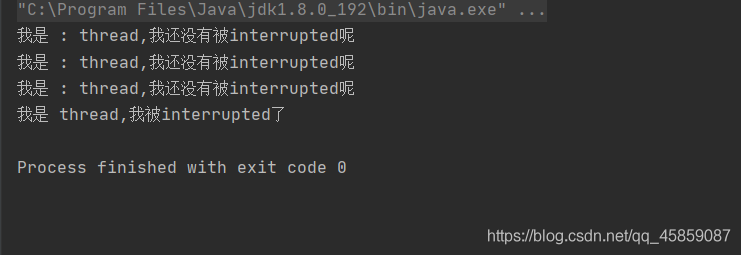
Thread.interrupted()方法第一次接收到終止的狀態(tài)后,之后會(huì)將狀態(tài)復(fù)位,Thread.interrupted()是靜態(tài)的,是全局的。
Threaed.currentThread().interrupt()只是普通的方法。
Thraed.interrupted()方法
package ThreadDeom;/** * user:ypc; * date:2021-06-12; * time: 10:32; */public class ThreadDemo12 { public static void main(String[] args) throws InterruptedException {Thread thread = new Thread(() ->{ for (int i = 0; i < 10; i++) {System.out.println(Thread.interrupted()); }});thread.start();thread.interrupt(); }}
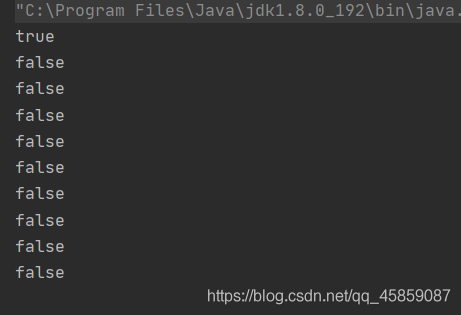
Threaed.currentThread().interrupt()
package ThreadDeom;/** * user:ypc; * date:2021-06-12; * time: 10:32; */public class ThreadDemo12 { public static void main(String[] args) throws InterruptedException {Thread thread = new Thread(() ->{ for (int i = 0; i < 10; i++) {//System.out.println(Thread.interrupted());System.out.println(Thread.currentThread().isInterrupted()); }});thread.start();thread.interrupt(); }}
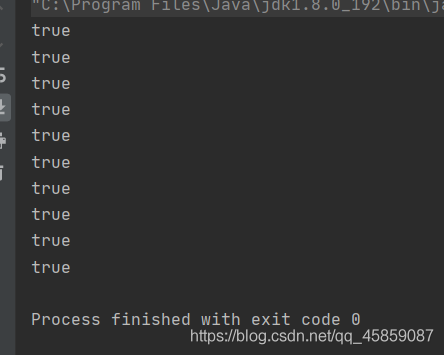
yield()方法
讓出CPU的執(zhí)行權(quán)
package ThreadDeom;/** * user:ypc; * date:2021-06-12; * time: 11:47; */public class ThreadDemo15 { public static void main(String[] args) {Thread thread1 = new Thread(() -> { for (int i = 0; i < 100; i++) {Thread.yield();System.out.println('thread1'); }});thread1.start();Thread thread2 = new Thread(() -> { for (int i = 0; i < 100; i++) {System.out.println('thread2'); }});thread2.start(); }}

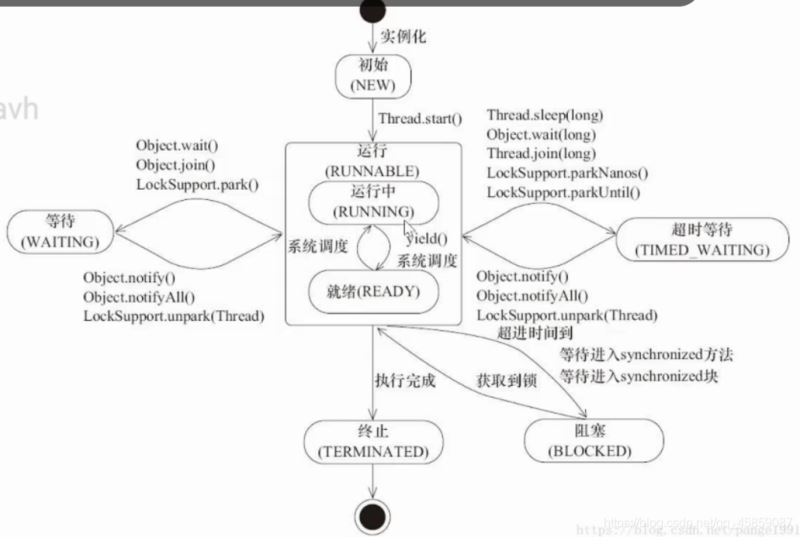
打印出線程的所有的狀態(tài),所有的線程的狀態(tài)都在枚舉中。👇
package ThreadDeom;/** * user:ypc; * date:2021-06-12; * time: 11:06; */public class ThreadDemo14 { public static void main(String[] args) {for (Thread.State state: Thread.State.values()) { System.out.println(state);} }}
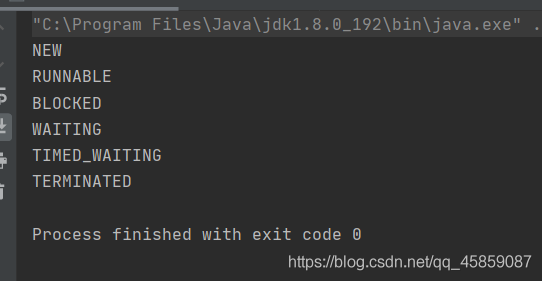
package ThreadDeom;/** * user:ypc; * date:2021-06-12; * time: 11:06; */class TestThreadDemo{ public static void main(String[] args) throws InterruptedException {Thread thread = new Thread(new Runnable() { @Override public void run() {try { Thread.sleep(2000);} catch (InterruptedException e) { e.printStackTrace();} }});System.out.println(thread.getState());thread.start();System.out.println(thread.getState());Thread.sleep(100);System.out.println(thread.getState());thread.join();System.out.println(thread.getState()); }}
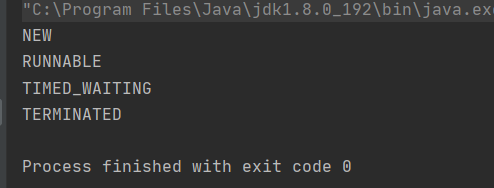
在Java中線程 的優(yōu)先級(jí)分為1 ~ 10 一共十個(gè)等級(jí)
package ThreadDeom;/** * user:ypc; * date:2021-06-11; * time: 21:22; */public class ThreadDemo9 { public static void main(String[] args) {for (int i = 0; i < 5; i++) { Thread t1 = new Thread(new Runnable() {@Overridepublic void run() { System.out.println('t1');} }); //最大優(yōu)先級(jí) t1.setPriority(10); t1.start(); Thread t2 = new Thread(new Runnable() {@Overridepublic void run() { System.out.println('t2');} }); //最小優(yōu)先級(jí) t2.setPriority(1); t2.start(); Thread t3 = new Thread(new Runnable() {@Overridepublic void run() { System.out.println('t3');} }); t3.setPriority(1); t3.start();} }}
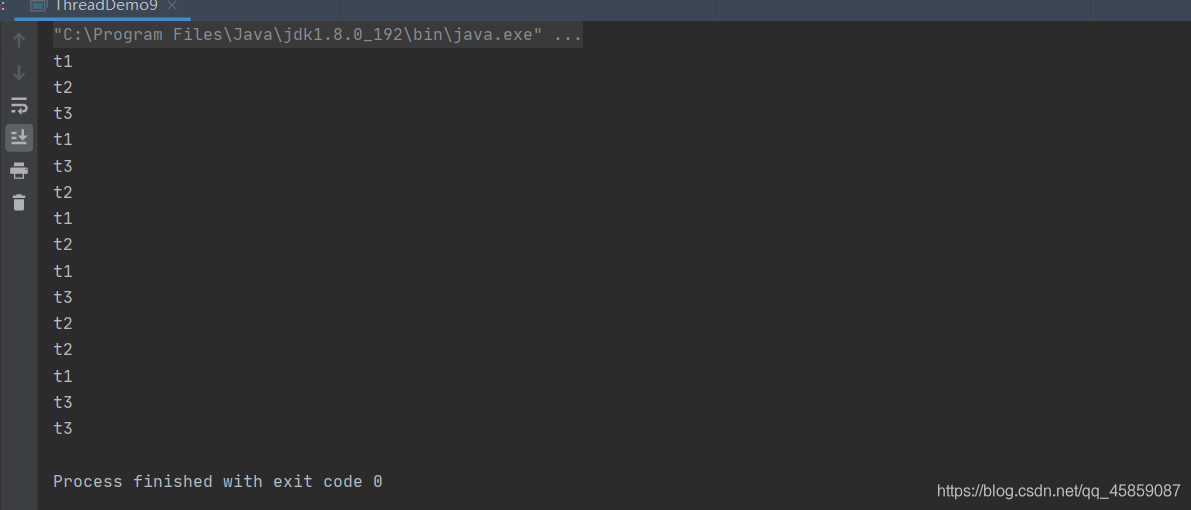
線程的優(yōu)先級(jí)不是絕對(duì)的,只是給程序的建議。
線程之間的優(yōu)先級(jí)具有繼承的特性,如果A線程啟動(dòng)了B線程,那么B的線程的優(yōu)先級(jí)與A是一樣的。👇
package ThreadDeom;/** * user:ypc; * date:2021-06-11; * time: 20:46; */class ThreadA extends Thread{ @Override public void run() {System.out.println('ThreadA優(yōu)先級(jí)是:' + this.getPriority());ThreadB threadB = new ThreadB();threadB.start(); }}class ThreadB extends ThreadA{ @Override public void run() {System.out.println('ThreadB的優(yōu)先級(jí)是:' + this.getPriority()); }}public class ThreadDemo7 { public static void main(String[] args) {System.out.println('main線程開(kāi)始的優(yōu)先級(jí)是:' + Thread.currentThread().getPriority()); System.out.println('main線程結(jié)束的優(yōu)先級(jí)是:' + Thread.currentThread().getPriority());ThreadA threadA = new ThreadA();threadA.start(); }}
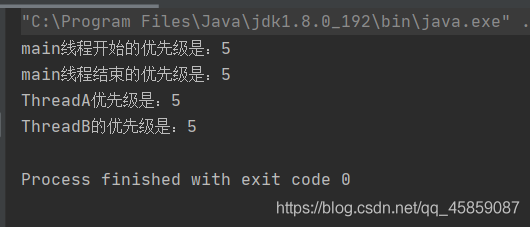
再看👇
package ThreadDeom;/** * user:ypc; * date:2021-06-11; * time: 20:46; */class ThreadA extends Thread{ @Override public void run() {System.out.println('ThreadA優(yōu)先級(jí)是:' + this.getPriority());ThreadB threadB = new ThreadB();threadB.start(); }}class ThreadB extends ThreadA{ @Override public void run() {System.out.println('ThreadB的優(yōu)先級(jí)是:' + this.getPriority()); }}public class ThreadDemo7 { public static void main(String[] args) {System.out.println('main線程開(kāi)始的優(yōu)先級(jí)是:' + Thread.currentThread().getPriority());Thread.currentThread().setPriority(9);System.out.println('main線程結(jié)束的優(yōu)先級(jí)是:' + Thread.currentThread().getPriority());ThreadA threadA = new ThreadA();threadA.start(); }}
結(jié)果為👇
 守護(hù)線程
守護(hù)線程Java中有兩種線程:一種是用戶線程,一種就是守護(hù)線程。
什么是守護(hù)線程?守護(hù)線程是一種特殊的線程,當(dāng)進(jìn)程中不存在用戶線程的時(shí)候,守護(hù)線程就會(huì)自動(dòng)銷毀。典型的守護(hù)線程就是垃圾回收線程,當(dāng)進(jìn)程中沒(méi)有了非守護(hù)線程,則垃圾回收線程也就沒(méi)有存在的必要了。
Daemon線程的作用就是為其他線程的運(yùn)行提供便利的。👇
package ThreadDeom;/** * user:ypc; * date:2021-06-11; * time: 21:06; */public class ThreadDemo8 { static private int i = 0; public static void main(String[] args) throws InterruptedException {Thread thread = new Thread(new Runnable() { @Override public void run() {while (true){ i++; System.out.println(i); try {Thread.sleep(1000); } catch (InterruptedException e) {e.printStackTrace(); }} }});//設(shè)置守護(hù)線程thread.setDaemon(true);thread.start();Thread.sleep(5000);System.out.println('我是守護(hù)線程thread 當(dāng)用戶線程執(zhí)行完成后 我也就銷毀了😭哭了'); }}

注意:守護(hù)線程的設(shè)置必須放在start()之前,否則就會(huì)報(bào)錯(cuò)。
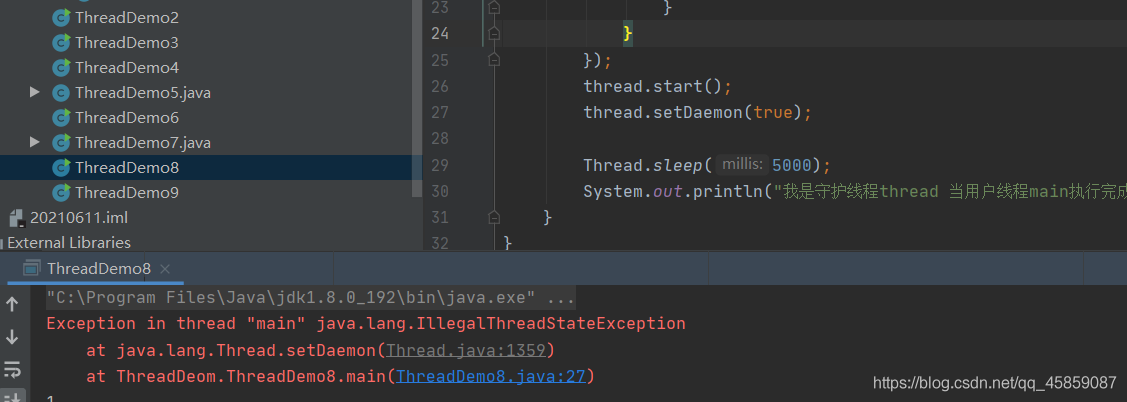
在守護(hù)線程中創(chuàng)建的線程默認(rèn)也是守護(hù)線程。
package ThreadDeom;/** * user:ypc; * date:2021-06-12; * time: 9:35; */public class ThreadDemo10 { public static void main(String[] args) {Thread thread1 = new Thread(()->{ Thread thread2 = new Thread(() -> { },'thread2'); System.out.println('thread2是守護(hù)線程嗎?:' + thread2.isDaemon());},'thread1');System.out.println('thread1是守護(hù)線程嗎?:' + thread1.isDaemon());//thread1.setDaemon(true);thread1.start(); // System.out.println('thread1是守護(hù)線程嗎?:' + thread1.isDaemon()); }}

再看👇
package ThreadDeom;/** * user:ypc; * date:2021-06-12; * time: 9:35; */public class ThreadDemo10 { public static void main(String[] args) {Thread thread1 = new Thread(()->{ Thread thread2 = new Thread(() -> { },'thread2'); System.out.println('thread2是守護(hù)線程嗎?:' + thread2.isDaemon());},'thread1');System.out.println('thread1是守護(hù)線程嗎?:' + thread1.isDaemon());thread1.setDaemon(true);thread1.start();System.out.println('thread1是守護(hù)線程嗎?:' + thread1.isDaemon()); }}

為了便于對(duì)某些具有相同功能的線程進(jìn)行管理,可以把這些線程歸屬到同一個(gè)線程組中,線程組中既可以有線程對(duì)象,也可以有線程組,組中也可以有線程。使用線程模擬賽跑
public class ThreadDemo5 { //線程模擬賽跑(未使用線程分組) public static void main(String[] args) {Thread t1 = new Thread(new Runnable() { @Override public void run() {try { Thread.sleep(1000);} catch (InterruptedException e) { e.printStackTrace();}System.out.println(Thread.currentThread().getName() + '到達(dá)了終點(diǎn)'); }}, '選手一');Thread t2 = new Thread(new Runnable() { @Override public void run() {try { Thread.sleep(1200);} catch (InterruptedException e) { e.printStackTrace();}System.out.println(Thread.currentThread().getName() + '到達(dá)了終點(diǎn)'); }}, '選手二');t1.start();t2.start();System.out.println('所有選手到達(dá)了終點(diǎn)'); }}
運(yùn)行結(jié)果:

不符合預(yù)期效果,就可以使用線程組來(lái)實(shí)現(xiàn)
package ThreadDeom;/** * user:ypc; * date:2021-06-11; * time: 18:24; */class ThreadGroup1 { //線程分組模擬賽跑 public static void main(String[] args) {ThreadGroup threadGroup = new ThreadGroup('Group');Thread t1 = new Thread(threadGroup, new Runnable() { @Override public void run() {try { Thread.sleep(1000);} catch (InterruptedException e) { e.printStackTrace();}System.out.println('選手一到達(dá)了終點(diǎn)'); }});Thread t2 = new Thread(threadGroup, new Runnable() { @Override public void run() {try { Thread.sleep(1200);} catch (InterruptedException e) { e.printStackTrace();}System.out.println('選手二到達(dá)了終點(diǎn)'); }});t2.start();t1.start();while (threadGroup.activeCount() != 0) {}System.out.println('所有選手到達(dá)了終點(diǎn)'); }}

線程組常用的方法
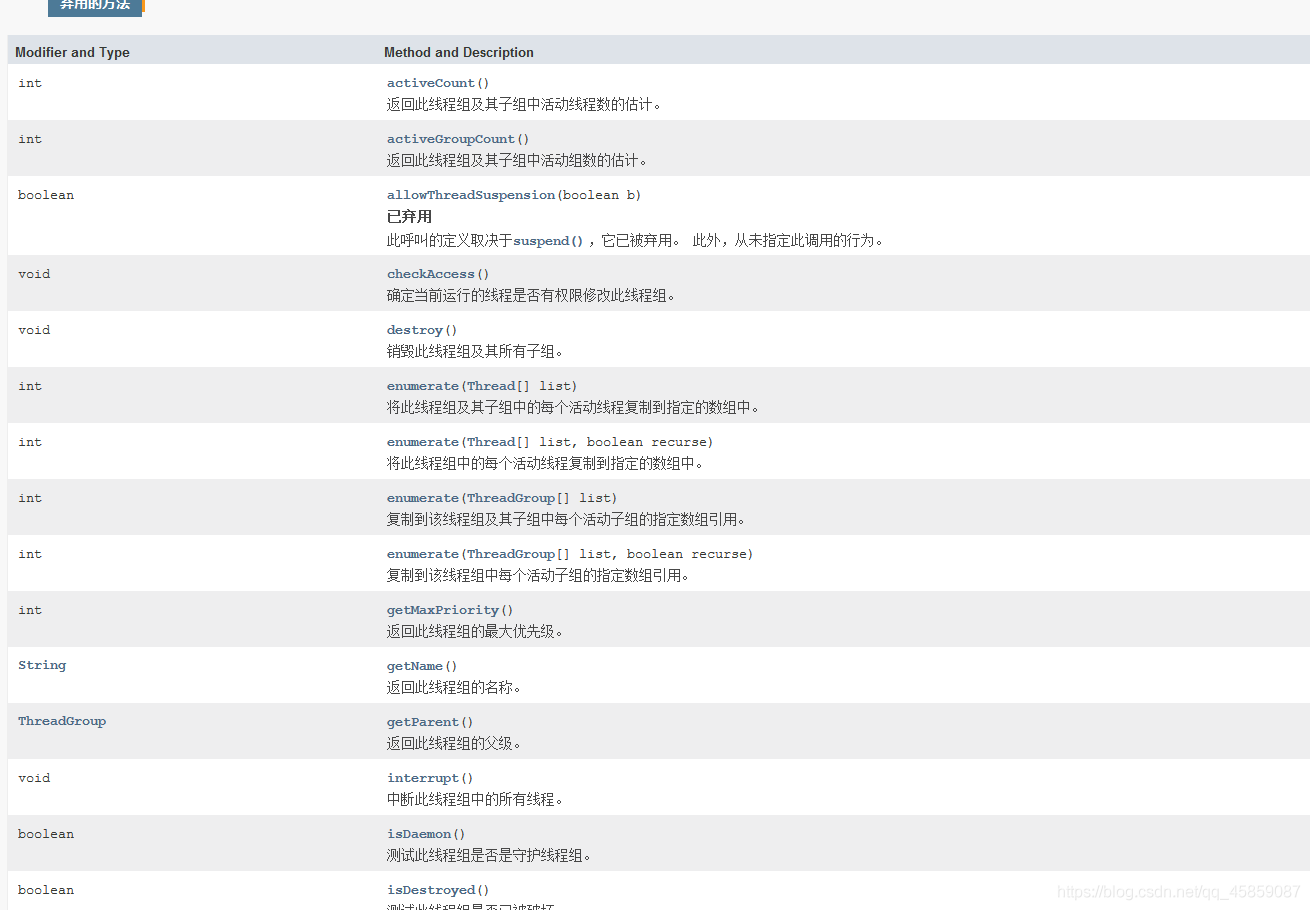
來(lái)看單線程情況下讓count分別自增和自減10000次
package ThreadDeom;/** * user:ypc; * date:2021-06-12; * time: 12:03; */class Counter { private static int count = 0; public void increase(){for (int i = 0; i < 10000; i++) { count++;} } public void decrease(){for (int i = 0; i < 10000; i++) { count--;} } public int getCount(){return count; }}public class ThreadDemo16 { public static void main(String[] args) {//單線程Counter counter = new Counter();counter.increase();counter.decrease();System.out.println(counter.getCount()); }}
結(jié)果符合預(yù)期
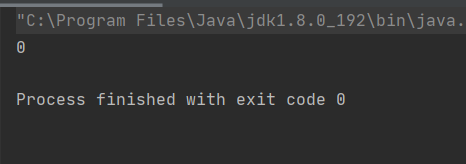
如果想使程序的執(zhí)行速度快,就可以使用多線程的方式來(lái)執(zhí)行。在來(lái)看多線程情況下的問(wèn)題
public class ThreadDemo16 { public static void main(String[] args) throws InterruptedException {//多線程情況下Counter counter = new Counter();Thread thread1 = new Thread(()->{ counter.decrease();});Thread thread2 = new Thread(()->{ counter.increase();});thread1.start();thread2.start();thread1.join();thread2.join();System.out.println(counter.getCount());/*//單線程Counter counter = new Counter();counter.increase();counter.decrease();System.out.println(counter.getCount()); */ }}
執(zhí)行結(jié)果:

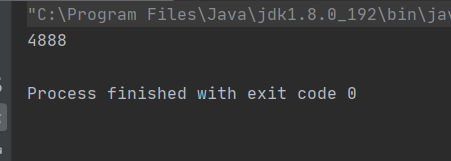

每次的執(zhí)行結(jié)果是不一樣的。這就是多線程的不安全問(wèn)題
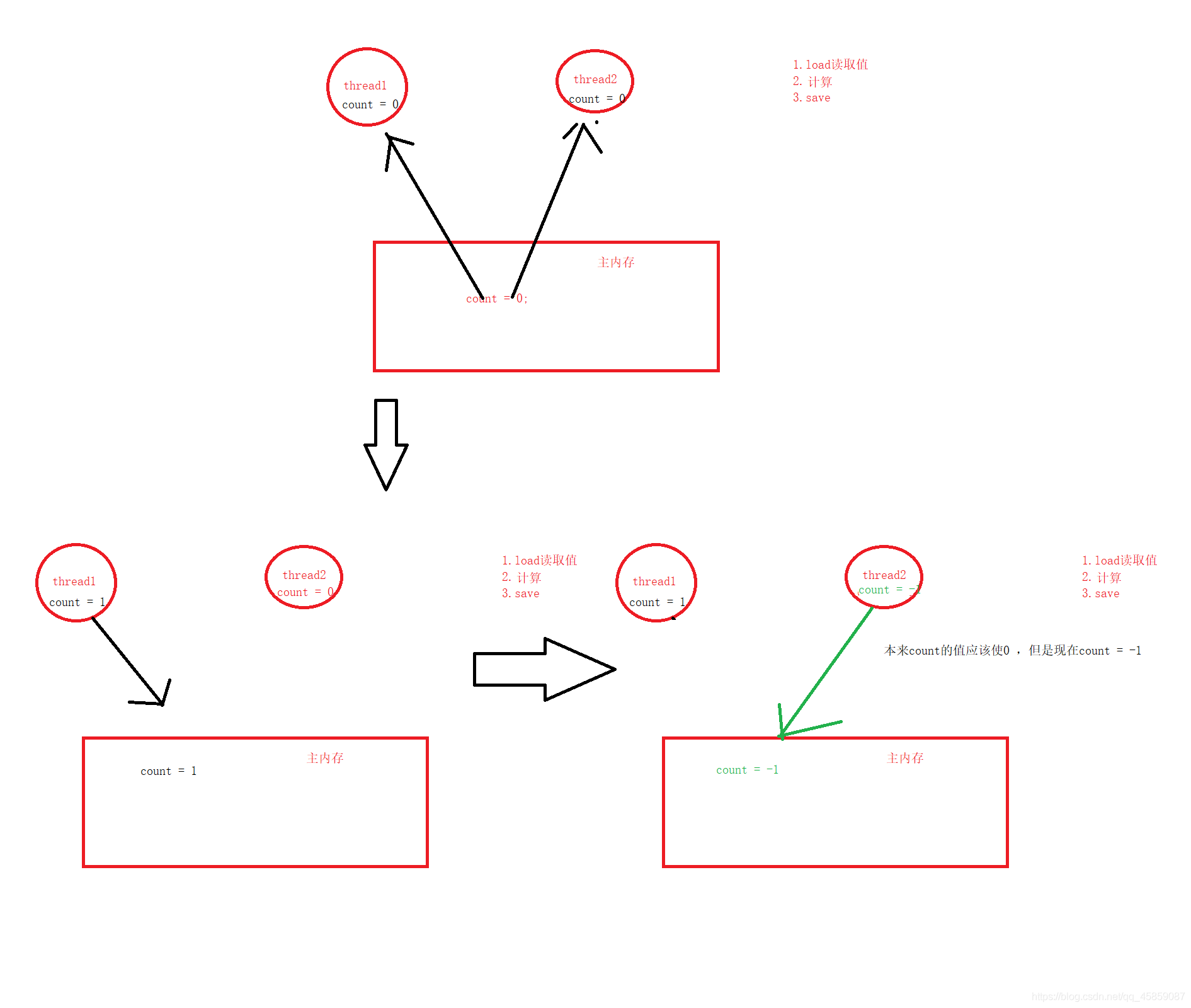
預(yù)期的結(jié)果是0,但結(jié)果卻不是。線程不安全問(wèn)題的原因:
1.CPU的搶占式執(zhí)行 2.多個(gè)線程共同操作一個(gè)變量 3.內(nèi)存可見(jiàn)性 4.原子性問(wèn)題 5.編譯器優(yōu)化(指令重排)多個(gè)線程操作同一個(gè)變量
如果多個(gè)線程操作的不是一個(gè)變量,就不會(huì)發(fā)生線程的不安全問(wèn)題,可以將上面的代碼修改如下:👇
public class ThreadDemo16 { static int res1 = 0; static int res2 = 0; public static void main(String[] args) throws InterruptedException {Counter counter = new Counter();Thread thread1 = new Thread(new Runnable() { @Override public void run() {res1 = counter.getCount(); }});Thread thread2 = new Thread(new Runnable() { @Override public void run() {res2 = counter.getCount(); }});System.out.println(res1 + res2);/*//多線程情況下Counter counter = new Counter();Thread thread1 = new Thread(()->{ counter.decrease();});Thread thread2 = new Thread(()->{ counter.increase();});thread1.start();thread2.start();thread1.join();thread2.join();System.out.println(counter.getCount());*//*//單線程Counter counter = new Counter();counter.increase();counter.decrease();System.out.println(counter.getCount()); */ }}
這樣就可以了:

內(nèi)存不可見(jiàn)問(wèn)題:看下面的代碼,是不是到thread2執(zhí)行的時(shí)候,就會(huì)改變num的值,從而終止了thread1呢?
package ThreadDeom;import java.util.Scanner;/** * user:ypc; * date:2021-06-12; * time: 13:03; */public class ThreadDemo17 { private static int num = 0; public static void main(String[] args) {Thread thread1 = new Thread(new Runnable() { @Override public void run() {while (num == 0){} }});thread1.start();Thread thread2 = new Thread(new Runnable() { @Override public void run() {Scanner scanner = new Scanner(System.in);System.out.println('輸入一個(gè)數(shù)字來(lái)終止線程thread1');num = scanner.nextInt(); }});thread2.start(); }}
結(jié)果是不能的:
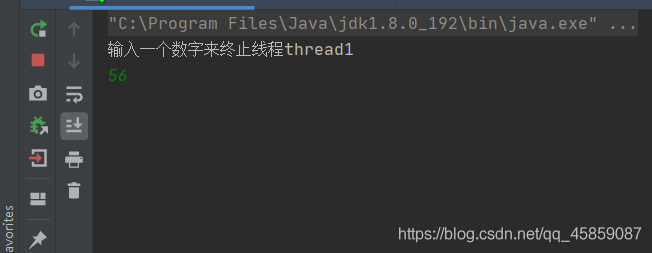
輸入一個(gè)數(shù)字后回車,并沒(méi)有讓thread1的循環(huán)結(jié)束。這就是內(nèi)存不可見(jiàn)的問(wèn)題。
原子性的問(wèn)題
上面的++和?操作其實(shí)是分三步來(lái)執(zhí)行的
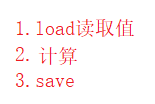
假設(shè)在第二部的時(shí)候,有另外一個(gè)線程也來(lái)修改值,那么就會(huì)出現(xiàn)臟數(shù)據(jù)的問(wèn)題了。
所以就會(huì)發(fā)生線程的不安全問(wèn)題
編譯器優(yōu)化編譯器的優(yōu)化會(huì)打亂原本程序的執(zhí)行順序,就有可能導(dǎo)致線程的不安全問(wèn)題發(fā)生。在單線程不會(huì)發(fā)生線程的不安全問(wèn)題,在多線程就可能會(huì)不安全。
volatile關(guān)鍵字可以使用volatile關(guān)鍵字,這個(gè)關(guān)鍵字可以解決指令重排和內(nèi)存不可見(jiàn)的問(wèn)題。

加上volatile關(guān)鍵字之后的運(yùn)行結(jié)果

但是volatile關(guān)鍵字不能解決原子性的問(wèn)題👇:
package ThreadDeom;/** * user:ypc; * date:2021-06-12; * time: 14:02; */class Counter1 { private static volatile int count = 0; public void increase() {for (int i = 0; i < 10000; i++) { count++;} } public void decrease() {for (int i = 0; i < 10000; i++) { count--;} } public int getCount() {return count; }}public class ThreadDemo18 { public static void main(String[] args) throws InterruptedException {Counter1 counter1 = new Counter1();Thread thread1 = new Thread(new Runnable() { @Override public void run() {counter1.decrease(); }});Thread thread2 = new Thread(() -> { counter1.increase();});thread1.start();thread2.start();thread1.join();thread2.join();System.out.println(counter1.getCount()); }}
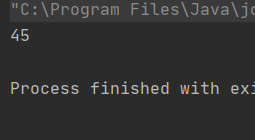

本篇文章就到這里,希望可以幫到你,也希望您能夠多多關(guān)注好吧啦網(wǎng)的其他文章!
相關(guān)文章:
1. IDEA 2020.1.2 安裝教程附破解教程詳解2. 利用ajax+php實(shí)現(xiàn)商品價(jià)格計(jì)算3. Java利用TCP協(xié)議實(shí)現(xiàn)客戶端與服務(wù)器通信(附通信源碼)4. 使用AJAX(包含正則表達(dá)式)驗(yàn)證用戶登錄的步驟5. JS圖片懶加載庫(kù)VueLazyLoad詳解6. Java實(shí)現(xiàn)的迷宮游戲7. Python 解決火狐瀏覽器不彈出下載框直接下載的問(wèn)題8. django queryset相加和篩選教程9. Java PreparedStatement用法詳解10. Spring如何集成ibatis項(xiàng)目并實(shí)現(xiàn)dao層基類封裝
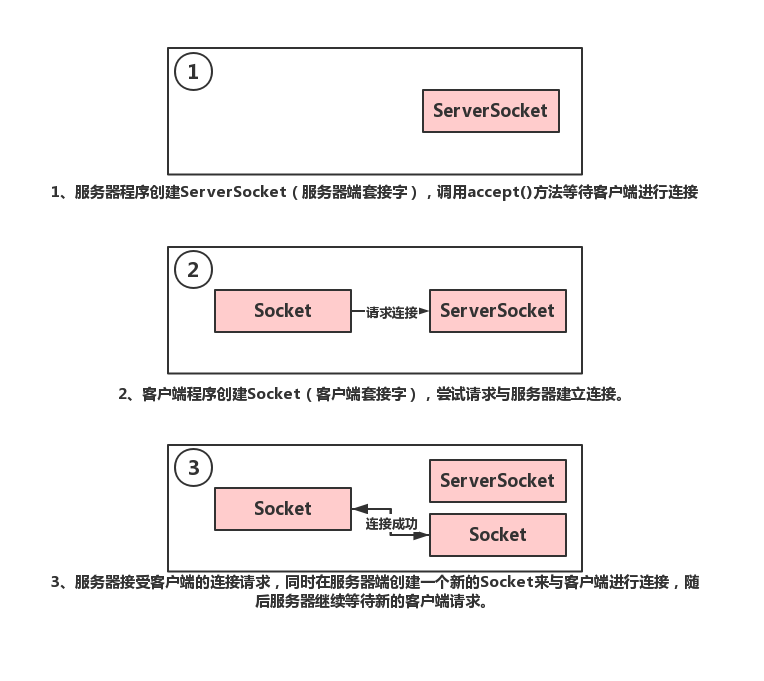
 網(wǎng)公網(wǎng)安備
網(wǎng)公網(wǎng)安備